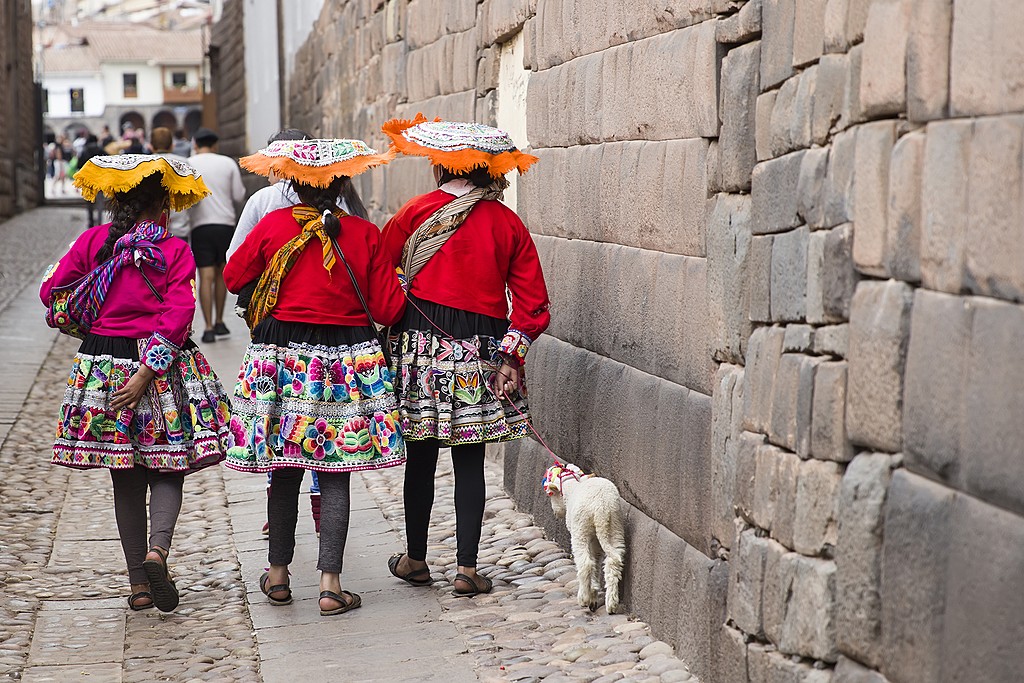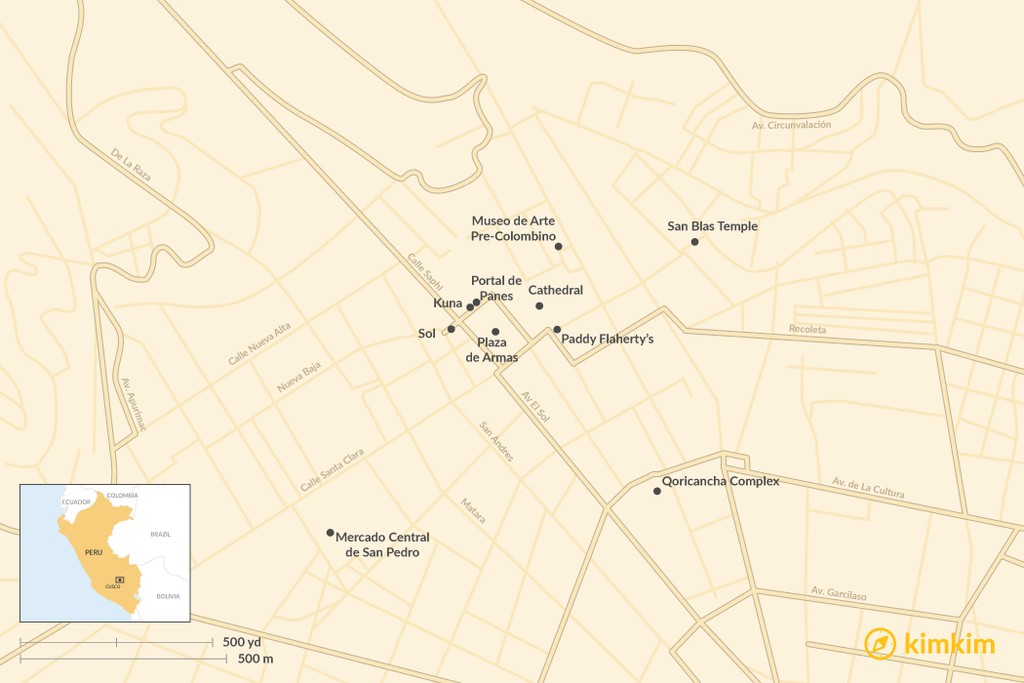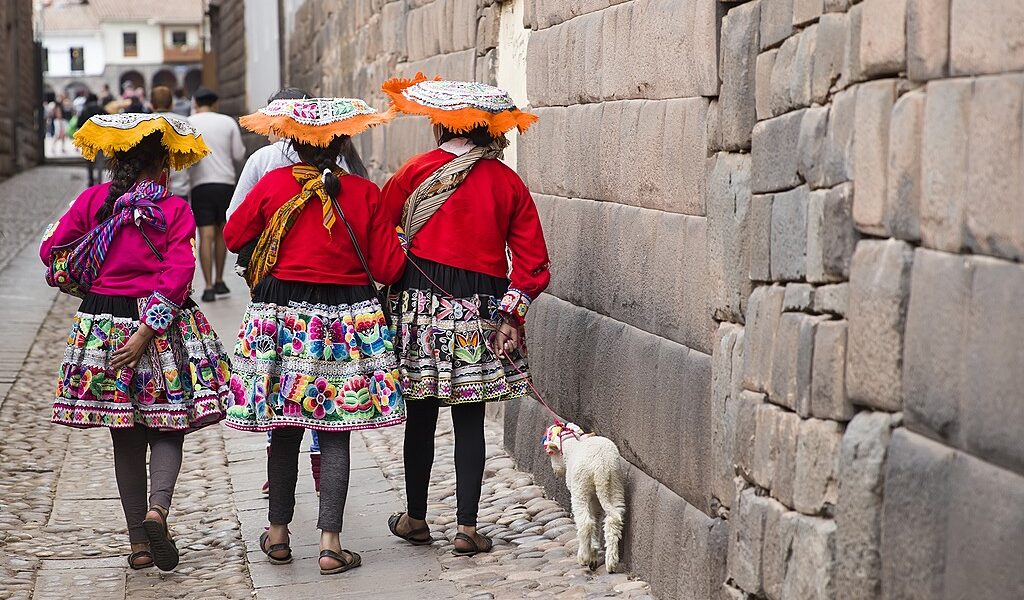
The former capital of the Incas, Cusco is today a bustling city that attracts scores of travelers for its ancient Incan remains, Andean culture and Spanish colonial splendors. Small stonewalled alleyways spill onto impressive plazas full of brightly dressed indigenous women, while tucked away are surprisingly excellent museums, quirky nightlife venues, and stylish clothing stores. This guide will direct you toward the best Cusco has to offer.
## Discovering the Enchanting City of Cusco: A Journey Through History and Culture
Cusco, a city pulsating with history and vibrant culture, is divided into five distinct areas, each radiating outwards from its own leafy and inviting square. Long before the arrival of the Spanish conquistadors in the 16th century, Cusco stood as a thriving metropolis, the heart of the mighty Inca Empire. The Incas, master builders and artisans, left an indelible mark on the city, constructing majestic edifices crafted from precisely cut and fitted stonework that continues to inspire awe today. Precious metals, with gold taking pride of place, were used lavishly to adorn temples and sacred places throughout the city, reflecting the Inca reverence for the sun and other deities.
The arrival of the Spanish marked a turning point in Cusco’s history. They seized control of the city, plundering its vast wealth and dismantling many of its sacred structures. Despite this turbulent past, the spirit of the Incas endures, and a number of original Inca buildings still stand as testaments to their ingenuity and architectural prowess. Among these, the **Qoricancha Complex** reigns supreme, considered by many to be the city’s most remarkable and well-preserved example of Inca stonework, a poignant reminder of a glorious past.
Throughout the year, Cusco bustles with a diverse array of travelers, all drawn to this captivating city as a gateway to the continent’s most iconic destination: the awe-inspiring, fortified Inca town of Machu Picchu. Despite the constant influx of visitors, Cusco manages to retain its unique charm and character, offering a captivating blend of ancient history, colonial grandeur, and vibrant modern life. This guide unveils the best of Cusco, highlighting must-see attractions and unforgettable experiences that should not be missed during your visit to this extraordinary city.
## Immerse Yourself in the Vibrancy of the Plaza de Armas
The heart and soul of Cusco is undoubtedly the beautiful **Plaza de Armas**, a bustling hub of activity that draws together tourists and locals alike at all hours of the day. This central square is not merely a meeting place; it’s a stage where the city’s vibrant life unfolds. Dominating the Plaza de Armas is the magnificent **Cathedral**, a testament to colonial architecture and a treasure trove of religious art. Within its walls reside some of the finest paintings of the Escuela Cusqueña, also known as the Cuzqueña School. This unique artistic tradition seamlessly blends European devotional art with the vibrant indigenous colors and iconography, creating a distinctly Andean style.
Among the Cathedral’s masterpieces, be sure to seek out The Last Supper by the talented Quechua artist Marcos Zapata. This iconic painting offers a fascinating glimpse into Andean culture, depicting Jesus and his disciples gathered around a traditional Andean feast. Instead of the familiar bread and wine, the table is laden with a juicy *cuy* (guinea pig), a local delicacy, and glasses of *chicha*, a traditional fermented maize beverage. It’s a captivating cultural fusion rendered in vivid detail.
Encircling the Plaza de Armas is the **Portal de Panes**, a charming covered walkway that provides shelter from the elements while offering a delightful array of experiences. Lined with bustling restaurants serving up a variety of cuisines, smart shops offering unique souvenirs, and vibrant nightlife venues that come alive after dark, the Portal de Panes has something for everyone. This is the perfect spot to escape the rain or sun while indulging in a bit of retail therapy or enjoying a delicious meal.
Take a moment to relax and soak in the atmosphere. Find a seat on one of the benches lining the verdant square and simply watch the world go by. The Plaza de Armas is particularly evocative at sunset, when the surrounding buildings are bathed in warm, flaming hues, creating a magical and unforgettable scene.
## Unravel the Secrets of the Incas at the Qoricancha Complex
Prepare to be mesmerized by the **Qoricancha Complex**, a truly impressive example of Inca stonework and a site of immense historical significance. This was once the most important Inca temple dedicated to the worship of Inti, the sun god. Rising majestically from the ancient walls of the Qoricancha is the **Convento de Santo Domingo**, a 17th-century Baroque Church. This striking juxtaposition of Inca stonework and Spanish colonial architecture provides a powerful visual representation of the clash between Andean and Western cultures.
Inticancha, the Temple of the Sun, was once an awe-inspiring complex, meticulously planned and constructed to honor the sun god. It consisted of four sanctuaries and a larger temple, each intricately designed and adorned with precious materials. The location of Inticancha within the Cusco Valley was carefully chosen. Every year, during the summer solstice, the sun’s rays would penetrate a specific niche, where the Inca emperor was once permitted to sit and receive the sun’s blessings.
The interiors of Inticancha were once a sight to behold, resplendent with precious metals that shimmered and gleamed in the sunlight. Gold panels adorned the walls, solid-gold altars graced the sanctuaries, and life-size gold figures stood as testaments to Inca artistry. A large golden sun disc, the ultimate symbol of Inca worship, dominated the temple.
Sadly, only the Inca masonry survived the ravages of time and the greed of the Spanish conquistadors. The Spanish ransacked the temple, melting down its gold and using the sturdy stonewalls as foundations for the Convento de Santo Domingo. Yet, even in its altered state, the Qoricancha Complex stands as a powerful reminder of the Inca’s incredible legacy.
## Wander Through the Artistic Charm of San Blas
A short but rewarding uphill walk from Cusco’s Plaza de Armas will lead you to the enchanting **Barrio de San Blas**, widely regarded as one of the city’s most attractive districts. This neighborhood exudes a bohemian atmosphere, attracting artists, artisans, and travelers seeking a more authentic Cusco experience. The Barrio de San Blas is a feast for the senses, with its beautifully restored buildings, quaint cobbled streets, and vibrant artistic energy.
The Barrio de San Blas is renowned for its artesanía workshops and stores, where you’ll discover a treasure trove of high-quality crafts. Many of these items are produced right before your eyes, allowing you to witness the artistry and dedication that goes into creating these unique pieces. Artists’ studios and artisan workshops line the narrow, winding streets, offering a glimpse into the creative heart of Cusco. Sprinkled amongst the workshops and studios are attractive hostels and charming little restaurants serving traditional Andean cuisine, creating a welcoming and vibrant atmosphere.
A must-see attraction in San Blas is the tiny **Templo de San Blas**, a hidden gem that showcases the intricate craftsmanship of the colonial era. The highlight of this small church is undoubtedly its pulpit, a stunning example of Spanish churrigueresque style. This elaborate masterpiece was carved from a single block of cedarwood, showcasing incredible skill and attention to detail. The pulpit is considered by many to be the finest example of wood carving in the Americas, a testament to the unknown craftsman’s exceptional talent.
## Immerse Yourself in Pre-Columbian Art at the Museo de Arte Pre-Colombino
Housed in the Casa Cabrera, an impressive 18th-century Spanish colonial mansion, the **Museo de Arte Pre-Colombino** offers a fascinating journey through the artistic heritage of Peru’s ancient civilizations. The museum displays a wonderful and carefully curated collection of archaeological artifacts dating from 1250 BC to 1532 AD, providing a comprehensive overview of the region’s rich pre-Columbian history. The museum is a must-visit for anyone interested in understanding the diverse cultures that thrived in Peru long before the arrival of the Spanish.
The exhibits are displayed in chronological order, allowing visitors to trace the evolution of art and culture over centuries. The artifacts on display were carefully selected from among thousands of objects held in storage at Lima’s Larco Museum, ensuring that only the most significant and representative pieces are showcased. The Museo de Arte Pre-Colombino is a testament to the enduring legacy of Peru’s ancient civilizations.
The exhibits are beautifully displayed, with explanatory panels in Spanish, French, and English providing valuable context and insights. The museum highlights the very best achievements of the country’s ancient cultures, showcasing their mastery of various artistic techniques and their sophisticated understanding of the world around them. Rooms are dedicated to some of Peru’s greatest civilizations, including the Chavín, Nazca, Moche, and Inca cultures, while others bring together the finest examples of woodwork, jewelry, silver, and gold. Temporary exhibitions are also frequently held at the museum, adding to the dynamic and ever-evolving experience.
## Experience the Bustling Atmosphere of the Mercado Central de San Pedro
A visit to Cusco is not complete without experiencing the vibrant chaos of the **Mercado Central de San Pedro**. This sprawling market is a sensory overload, a kaleidoscope of colors, sounds, and smells that provides a unique insight into local life. The Mercado Central is a true reflection of Cusco’s cultural diversity, offering a wide array of goods and experiences.
The market has a plethora of stalls selling anything and everything imaginable, from exotic foods (including, for the adventurous, frogs) to herbal remedies sourced from the depths of the Amazon jungle. You’ll find plenty to keep you perusing for hours, as clothes are displayed alongside crafts, knick-knacks, fresh fruits, vegetables, and even sacks of coca leaves – to name just a few of the diverse offerings. The Mercado Central is a true microcosm of Cusco, reflecting the city’s vibrant energy and cultural richness.
If you’re traveling on a budget, the Mercado Central de San Pedro is a great place to grab a delicious and affordable meal. Many stalls offer some of the cheapest street meals in the city, providing a taste of authentic Peruvian cuisine without breaking the bank. Take a seat at one of the stalls and tuck into local dishes prepared with seasonal produce sourced directly from the Sacred Valley. Don’t miss the opportunity to sample fresh smoothies and juices made with exotic local fruits, a refreshing and delicious way to experience the flavors of Peru.
## Indulge in the Luxury of Authentic Alpaca Clothing
The center of Cusco is brimming with shops claiming to sell authentic alpaca and vicuña clothing, offering a tempting opportunity to acquire a luxurious and lasting souvenir. However, it’s essential to exercise caution, as many items sold on the streets and in less reputable shops are made of synthetic material, lacking the warmth and quality of genuine alpaca and vicuña wool. To ensure you’re purchasing the real deal, it’s best to head to a store that specializes in alpaca clothing and has a reputation for quality and authenticity.
Among the most famous and trusted brands are Kuna and Sol Alpaca, both well-established chains with stores located throughout Peru. These stores offer a wide selection of high-quality alpaca and vicuña clothing, ensuring that you’re getting a genuine product that will last for years to come.
While the prices in these specialized stores may be higher than those found on the street, the quality and craftsmanship are unmatched. You’ll find knitted and woven clothing along with a range of accessories made with fine Peruvian fibers, all crafted with skill and care. Look out for alpaca and vicuña-wool sweaters, shawls, hats, blankets, scarves, and gloves, all perfect for staying warm in Cusco’s cool mountain air or for bringing a touch of Peruvian luxury back home. Even with the higher prices, purchasing genuine alpaca clothing in Cusco is still considerably cheaper than what you’d pay back home for similar quality items.
## Savor the Flavors of Traditional Andean Cuisine
Peruvian cuisine has taken the world by storm in recent years, earning a reputation as one of the best and most innovative culinary traditions in the world. In Cusco, high up in the Andes, the country’s chefs expertly combine innovative recipes featuring international influences with a diverse range of indigenous ingredients, creating a unique and unforgettable cuisine known as *novoandina*. This culinary style is characterized by its fresh, local ingredients, its innovative techniques, and its commitment to preserving and promoting Peruvian culinary heritage.
Cusco is a true haven for foodies, offering a plethora of restaurants to suit all budgets and tastes. From cheap and cheerful backpacker eateries serving up hearty and affordable meals to elegant restaurants run by some of the world’s most renowned chefs such as Gastón Acurio, Cusco has something to satisfy every palate. The Andes’ most popular dish is undoubtedly *cuy*, guinea pig, a traditional delicacy that has been enjoyed in the region for centuries. *Cuy* is typically served deep-fried (*cuy chactado*), resulting in a crispy and flavorful dish. While *cuy* may not be for everyone, it is certainly a dish for adventurous eaters looking to experience the authentic flavors of the Andes. It is often presented with its legs splayed out. If you’d rather try *cuy* enhanced with a few spices, head to Indian restaurant Korma Sutra on Calle Tandapata for a crispy tandoori guinea pig.
## Raise a Glass at the Highest Irish-Owned Pub on the Planet
Nestled in a highland valley surrounded by soaring peaks that reach over 19,000 ft, the former capital of the Incas boasts a unique claim to fame. While it’s not as high as Bolivia’s La Paz, Cusco proudly claims to be home to the highest Irish-owned pub on the planet. At an altitude of 11,156 ft, Paddy Flaherty’s, located on Calle Triunfo, attracts travelers seeking a taste of home and a cozy atmosphere.
Paddy Flaherty’s offers a welcome respite from the Andean altitude and the often-challenging Peruvian cuisine. The pub’s cozy wood-paneled interiors are filled with pictures and Irish curios, creating a warm and inviting atmosphere that instantly transports you to the Emerald Isle.
While you won’t exactly be mingling with locals here, Paddy Flaherty’s is a great place to enjoy some good old comfort food. The menu features all-day Irish breakfasts, shepherd’s pie, and cheeseburgers, providing a familiar taste for homesick travelers. And, of course, Guinness is on tap at all times of the day, offering a perfect complement to the hearty pub fare.

B-2121

